By Leslie Nemo
A green space larger than London’s Hyde Park is coming to Athens, Greece. The expanse, called the Ellinikon Metropolitan Park, will stretch from the coast into the city on the grounds of the decommissioned Ellinikon International Airport.
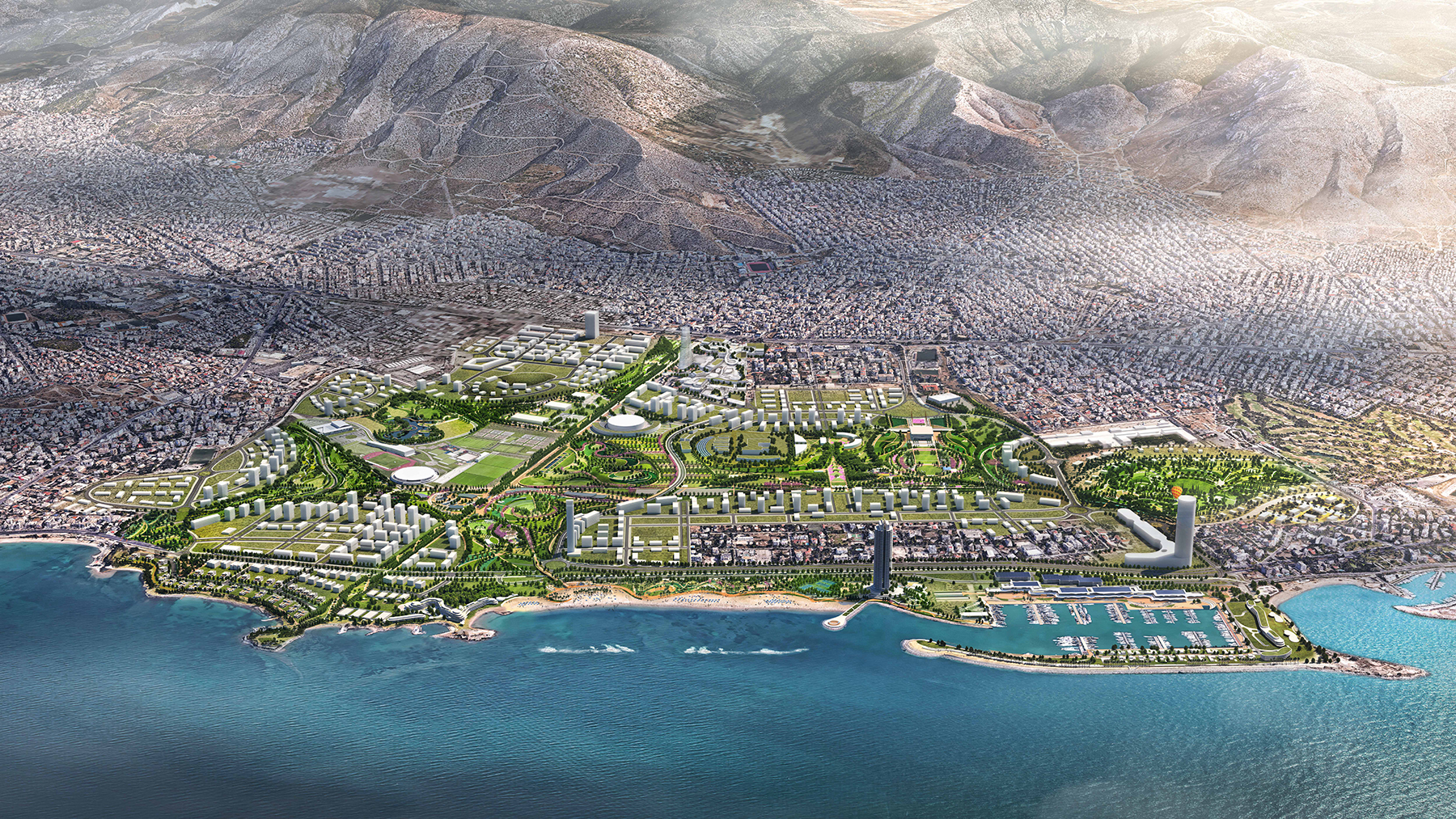
The hundreds of multipurpose acres are far from the only changes coming to the airport property. But the site will stand out as one of the few large, outdoor spaces in Athens explicitly created for members of the public to use however they would like.
The newness of a park of this scale, for locals but also all Europeans and visitors, makes attention inevitable, says Michael Grove, FASLA, PLA, the chair of landscape architecture, civil engineering, and ecology at Sasaki, a global design firm.
“This is a bit of a holy grail for us — this is a generational project,” he says.
From takeoff to teardown
The airport grounds that will soon become the Ellinikon park and a broader complex saw its last airplane in 2001, when the city transferred air transportation to a newer facility, the Athens International Airport, in preparation for the 2004 Summer Olympics, which the country hosted. Much of the decommissioned airport was converted to host athletic infrastructure for the event, but afterward the airport and infrastructure were largely abandoned.
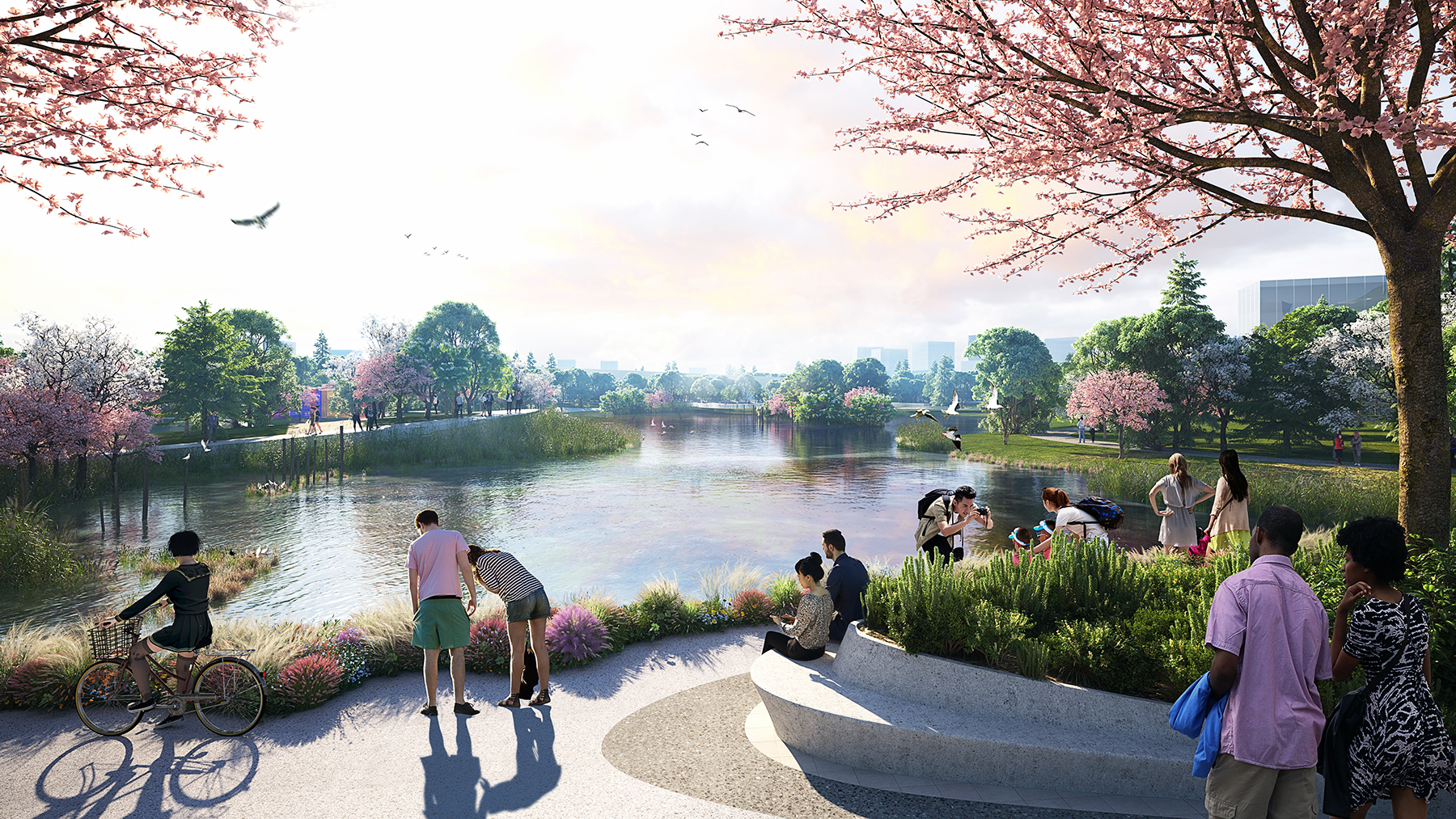
Not long after, a presidential decree authorized redevelopment of the airport grounds. Progress on the project has been stop-and-go.
The first solicitation of development bids was in 2011, and Lamda Development, a Greek real estate company, won the rights to develop the property in 2014. Demolition work began in 2020.
Since then, most of the changes to the property, which Lamda predicts will require an $8.6 billion investment, have dealt with future commercial and residential spaces that will also sit on former airport property. Lamda plans to build developments such as hotels, entertainment, and restaurant spaces and up to six high-rises, all of which could max out at 200 m above sea level. The long list of infrastructure changes also includes placing a section of roadway underground so that it won’t interfere with pedestrians trying to cross from the future park to the waterfront.
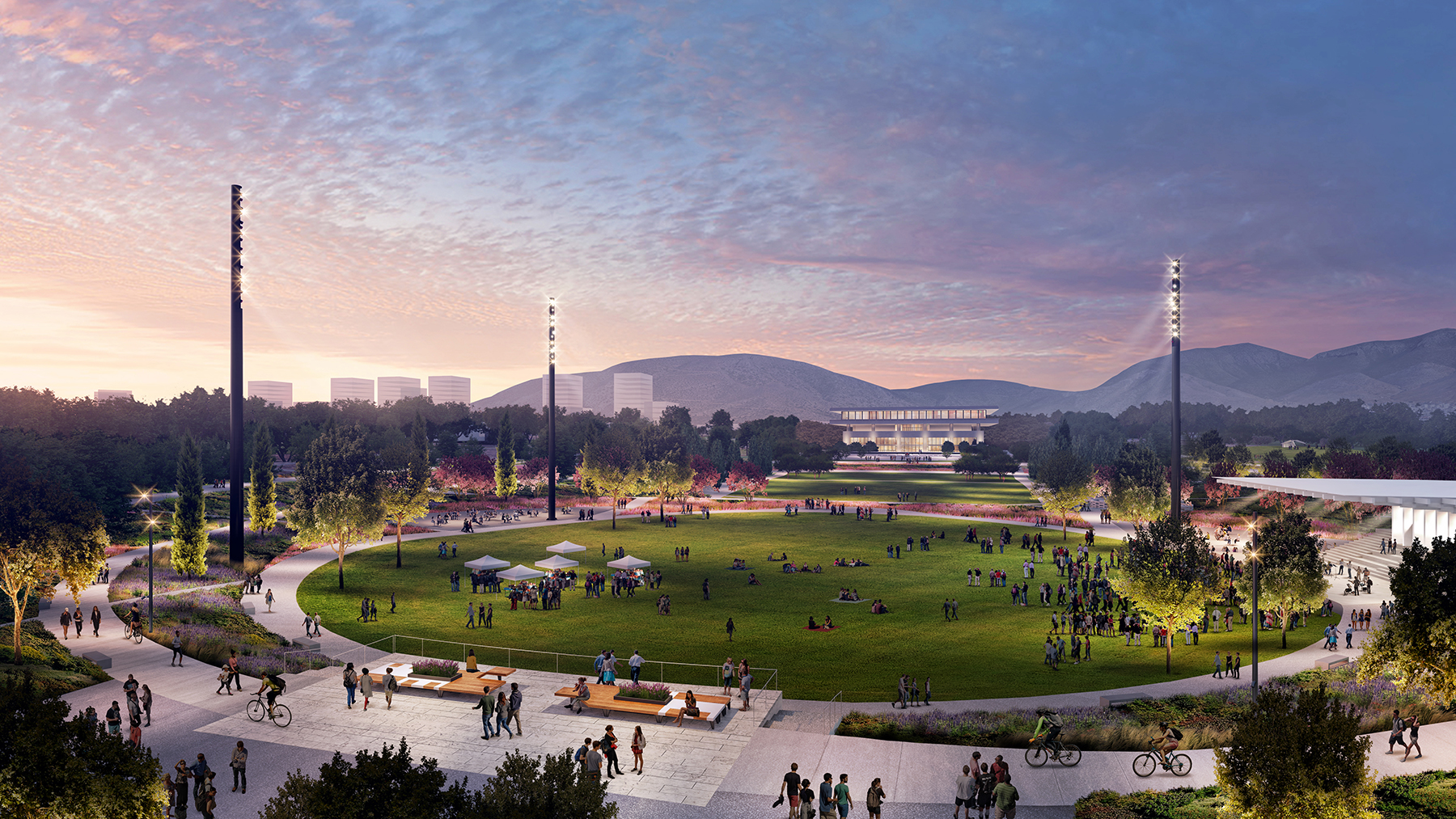
Nestled into the center of the proposed businesses and housing will sit the 650-acre park — the project Sasaki was brought on for. When complete, repeating elements scattered throughout the landscape should cater to the needs of all kinds of visitors, whether locals or tourists, accessing the park from all different directions. A couple amphitheaters, multiple pickup sports fields, various sections with hiking paths, and at least four themed playgrounds will be available. With motifs running from the Olympic Games to maritime adventure to aviation, the playgrounds in particular mean to tie into the site's history.
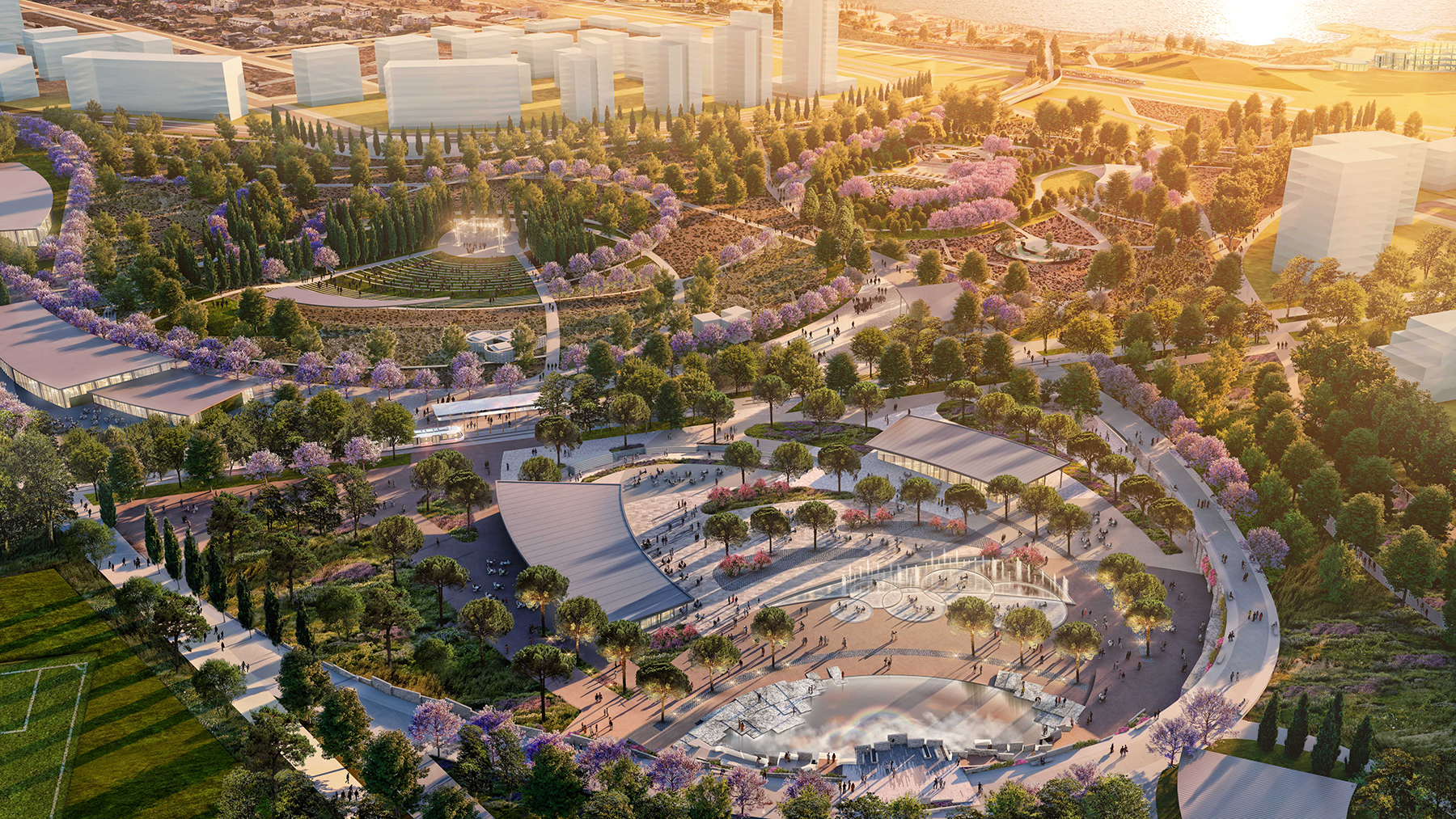
There are a lot of those types of moments and spaces that celebrate not only the culture of the residents in Greece but also the site itself,” says Shuai Hao, PLA, a senior associate landscape architect at Sasaki.
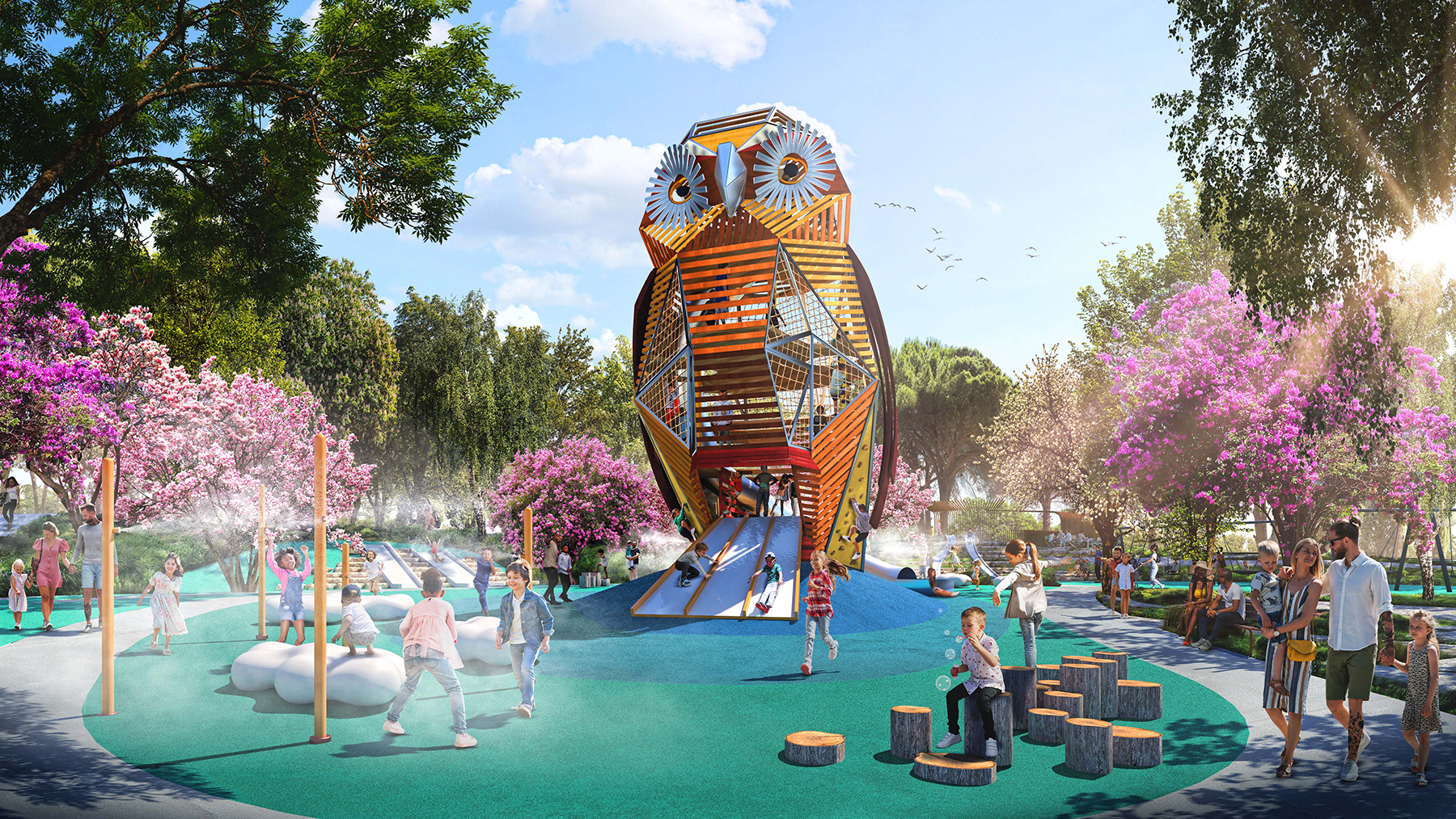
Creating these distinct spaces means the design team will need to rework the topography. As a former airstrip, the existing land is one large, gradual slope, flat except for the roughly 48 ft rise in elevation from the waterfront all the way to the eastern property boundary. Thankfully, the team has plenty of material to work with.
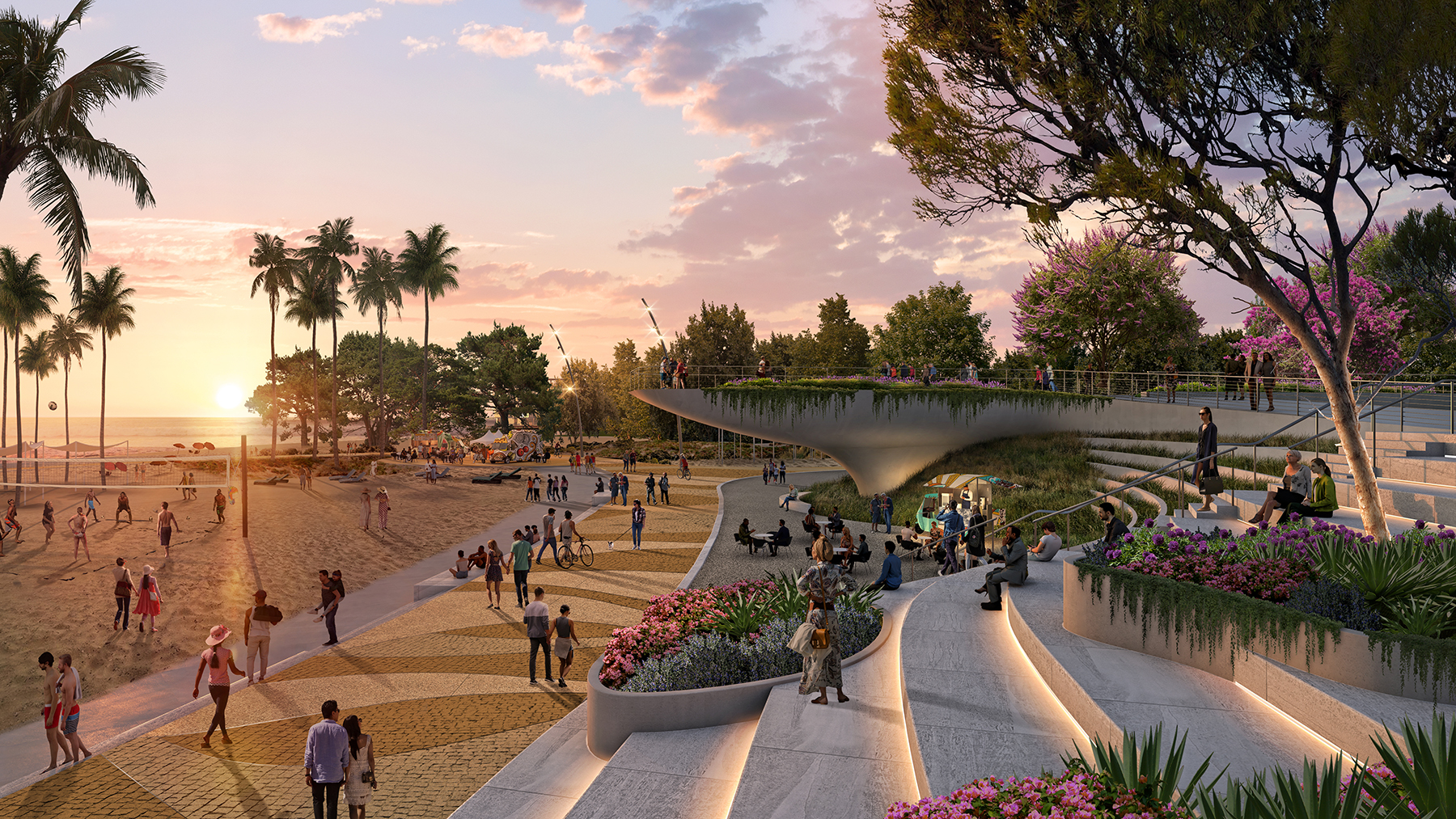
More than 1 million cu m of fill from off-site construction around the rest of the development will find a home within the green space. Sasaki has set a goal for the park to reach carbon neutrality within 35 years, an ambition that the retained earth deployed as the hills and embankments will help the site achieve.
A runway gains hills
The design and construction teams have a similar reuse plan in place for the concrete lining the former airport’s grounds. With a goal of reusing all the concrete on the grounds, the team has 309,140 sq ft of 1 ft thick pavement to redeploy.
To that end, contractors will crush some for clean fill or slope stabilization material near stormwater management systems.
Construction teams will also make use of the most attractive sections of the concrete: Local land is rich in marble and quartz, meaning aggregates like that of the old airport runways look like terrazzo when cut, says Chris Hardy, ASLA, PLA, LEED AP ND, a senior associate landscape architect and the manager for the project at Sasaki. These larger cutouts will fit into the park as dry stack retaining walls or public seating. While it was easy to make crushed concrete with the equipment already on-site for the other property development projects, actually lifting the concrete sections will require problem-solving. One possible solution involves borrowing machinery from a nearby marble mine to lift the sections out in 5 m by 3 m slabs.
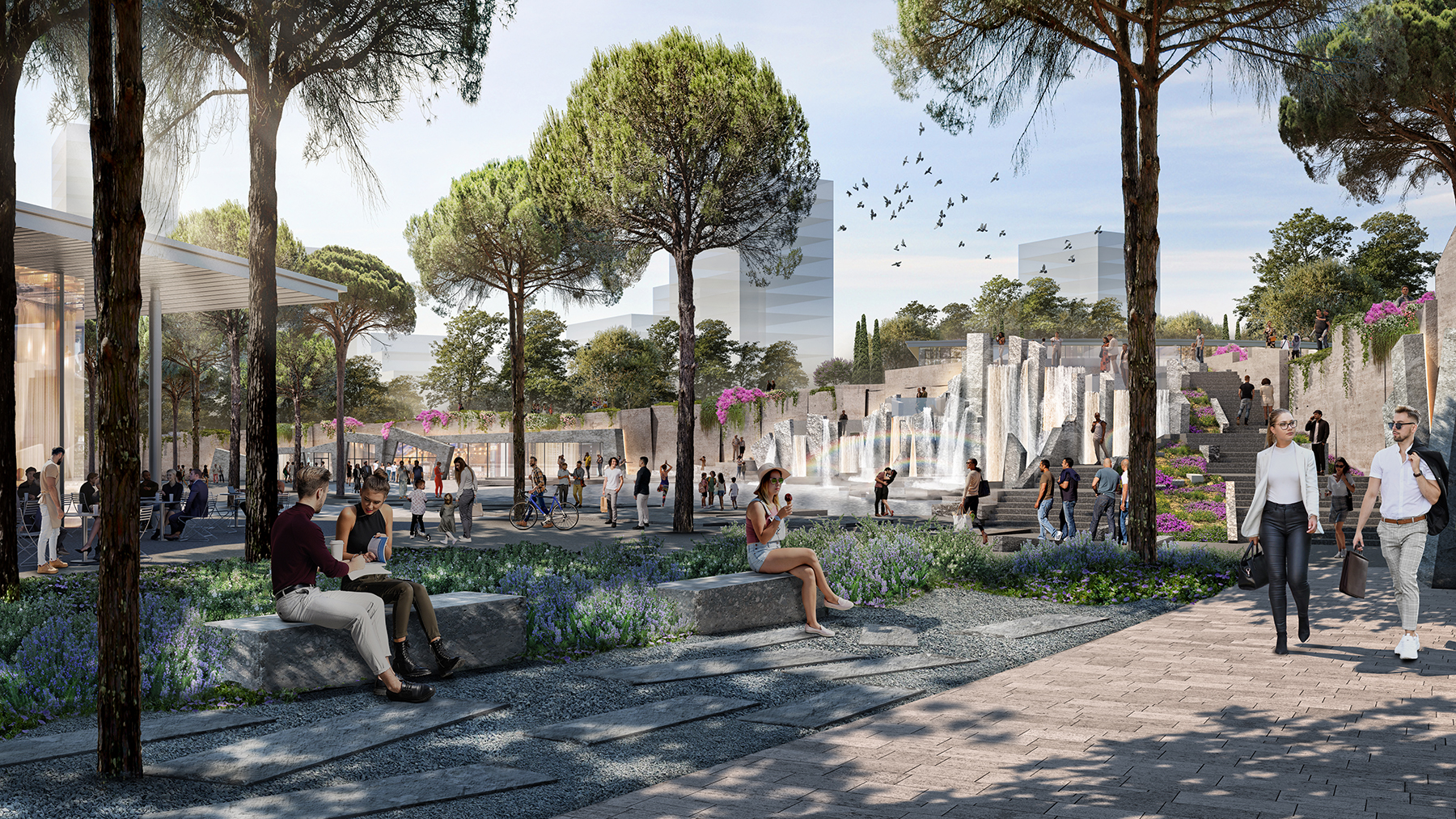
Landscaping will replace the concrete. Sasaki estimates more than 3.3 million plants will go into the park and is working with a range of local businesses and experts to determine which species will work best in the site’s alkaline soil. The team has worked with a local landscape architecture firm, doxiadis+, to help gauge how many seedlings for grasses, trees, shrubs, and more will have to be imported. Without some of the national baselines that exist in the U.S., such as the American Nursery & Landscape Association’s standards, the Sasaki team has helped set protocols with the local nurseries, including systems for monitoring imported plants for pests. Panayotis Dimopoulos, Ph.D., a local ecologist with the University of Patras, is also helping the team with testing possible plantings and developing seed mixes.
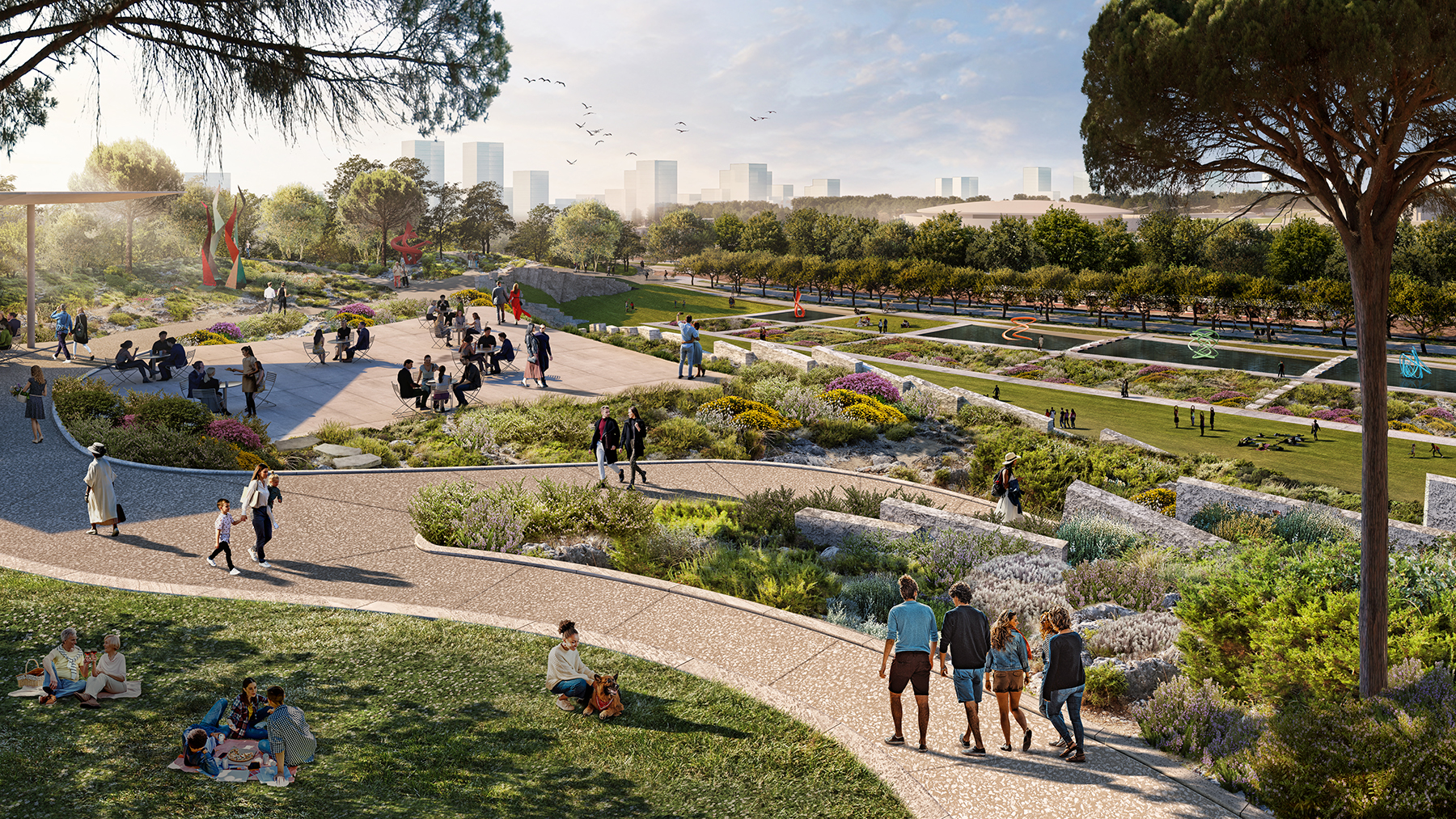
Continuing the reuse plans, the team is relocating as many trees already on the property as possible — including the thousands of olive trees which have proved surprisingly easy to move. To irrigate it all, future maintenance teams will turn to tertiary-treated reclaimed water.
Other water management systems for the park will be designed to accommodate what dry summers and flood-prone winters will bring to the green space.
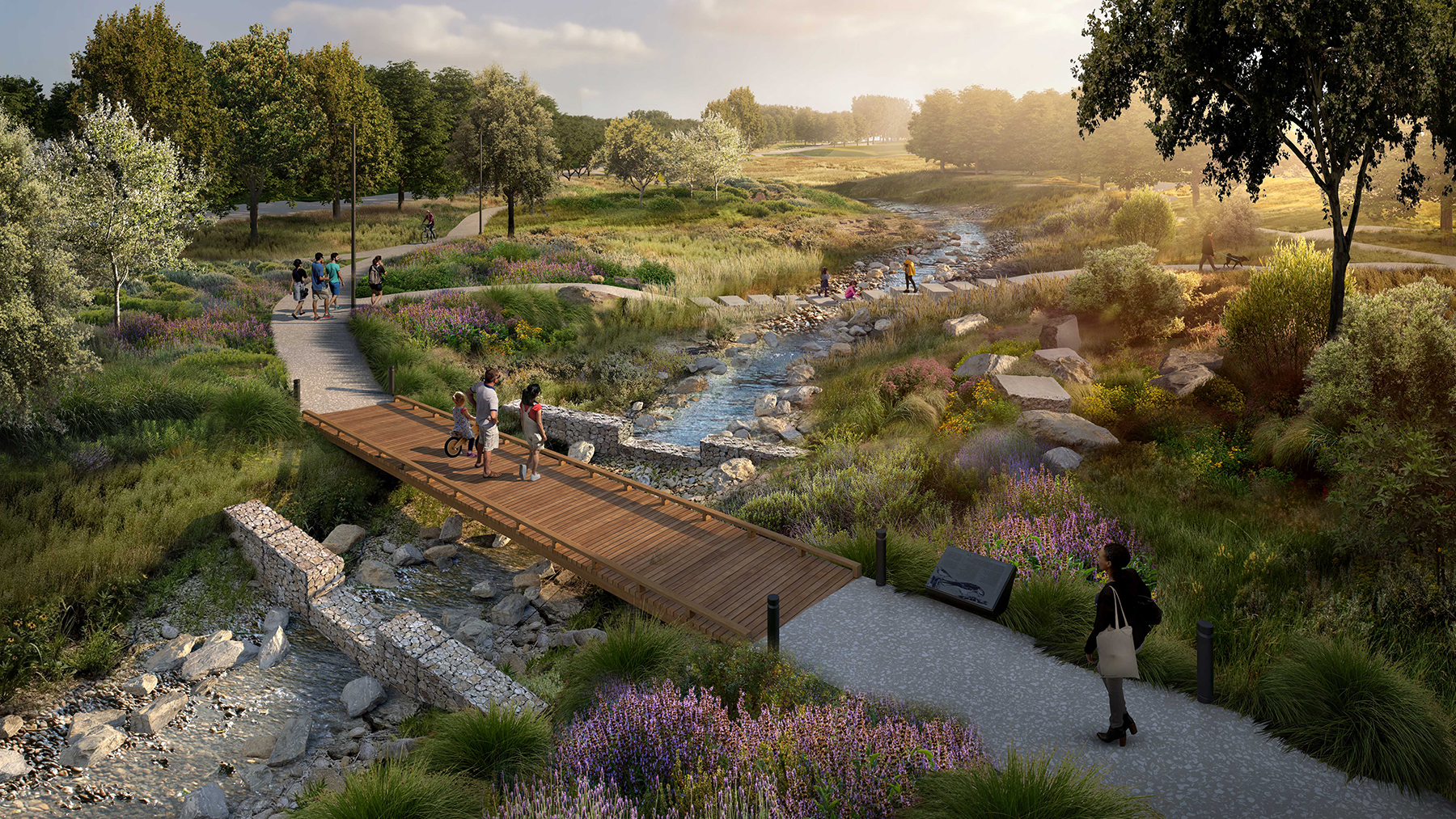
Working with the international engineering firm Langan and local engineering firm LDK Consultants, Sasaki has planned for porous pavement and bioswales throughout the landscape to provide filtration for rainwater before it flows to ocean outfalls. A couple streams that cut through the park and go dry in the summer will also have their edges restored with wetland plant species. Hopefully, the plantings will attract some wildlife that historically lived among the foliage.
Because above- and below-ground storage facilities held jet fuel, lubricants, corrosive liquids, and other possible contaminants, certain locations on the property will undergo soil remediation or removal.
Much of what the park and its surrounding development will hold won’t be seen for years. The waterfront development, a marina, the undergrounding of utilities, and the roadway — along with approximately the first half of the park — should be completed in the first half of 2026.
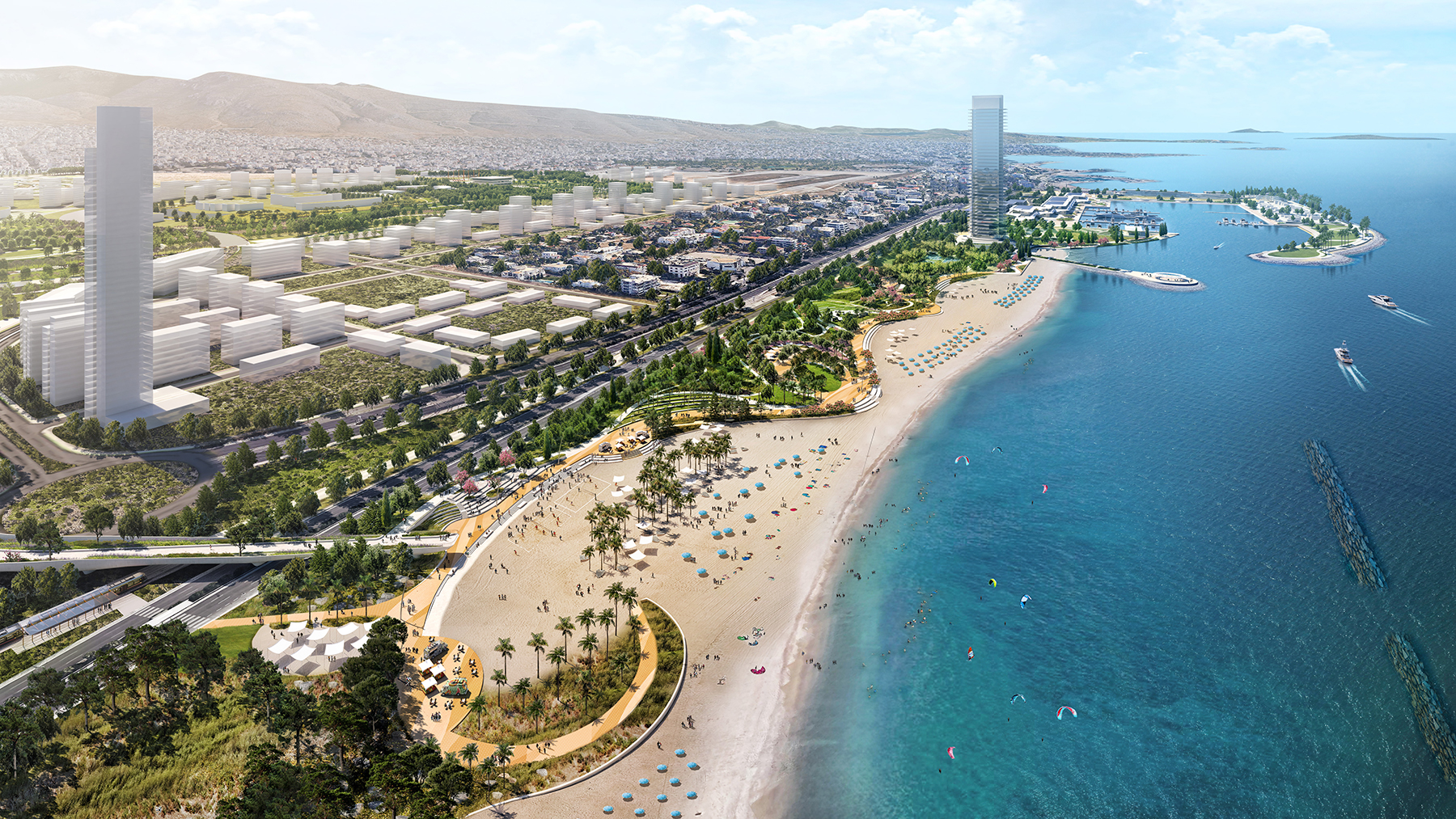
The yearslong process, and what it could mean for future parks, is a responsibility to be taken seriously. “The onus is on us to set a standard in terms of resilient design,” Grove says, “and really seeing this park as a potential future benchmark by which other parks will be measured.”
This article is published by Civil Engineering Online.



